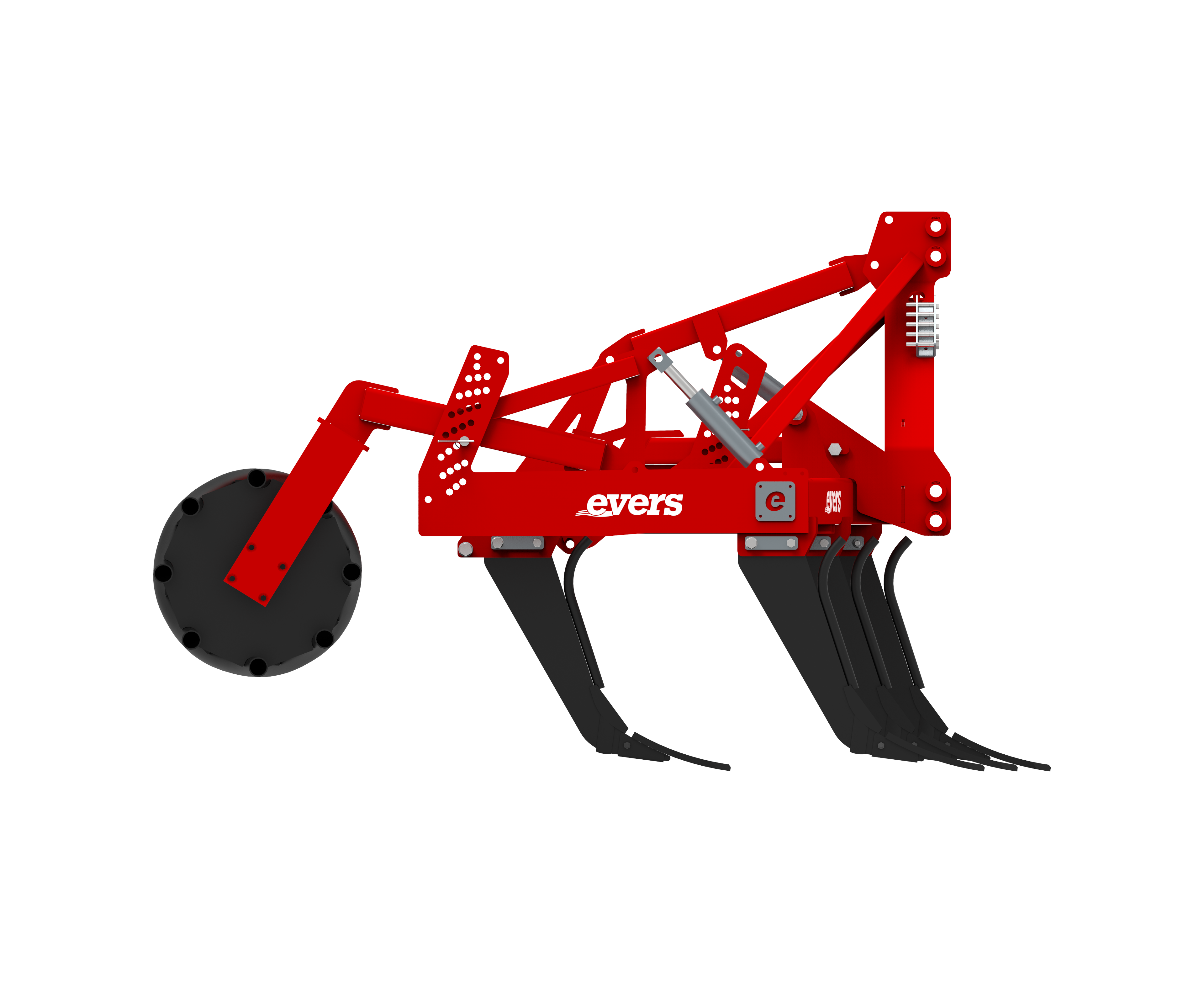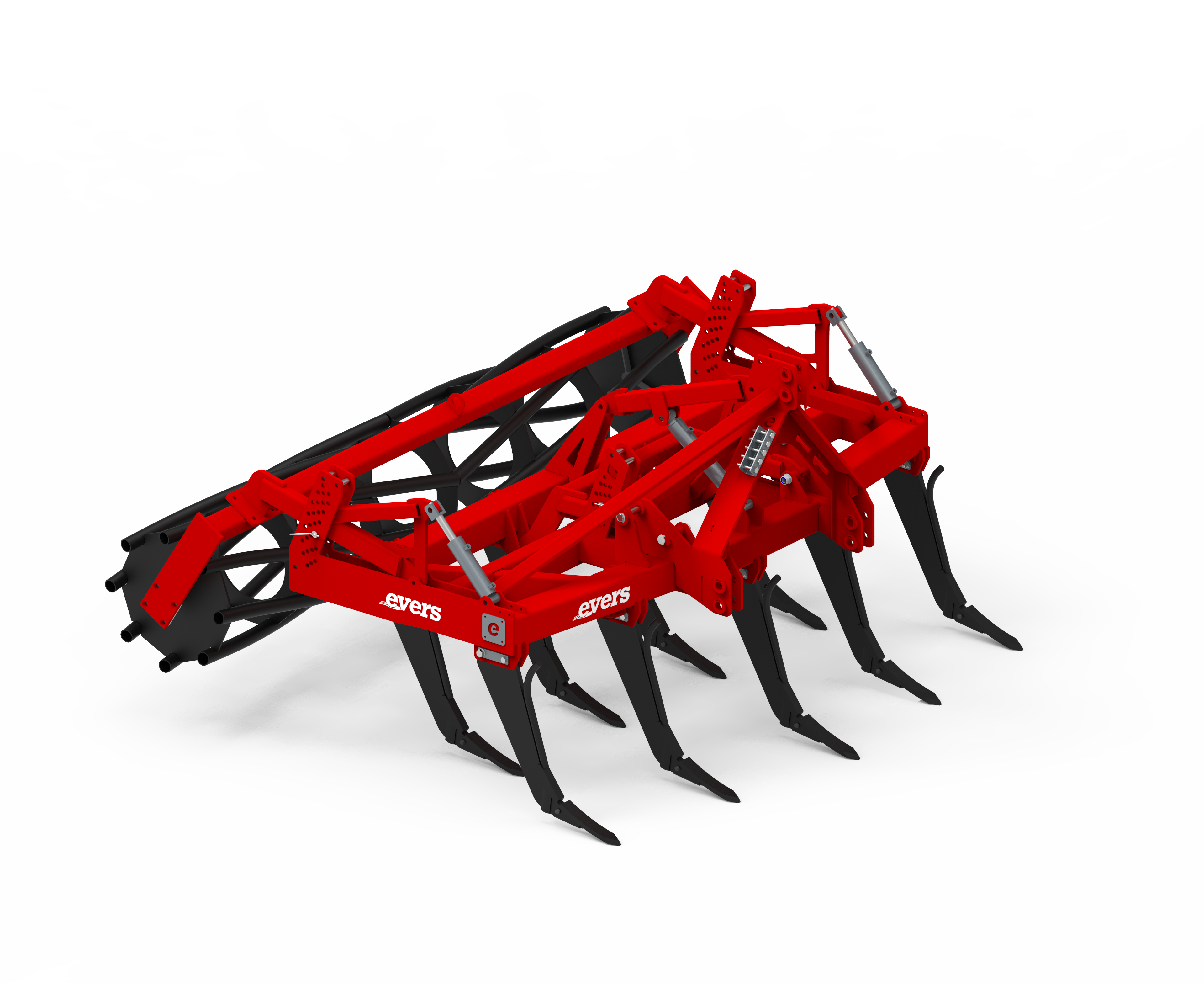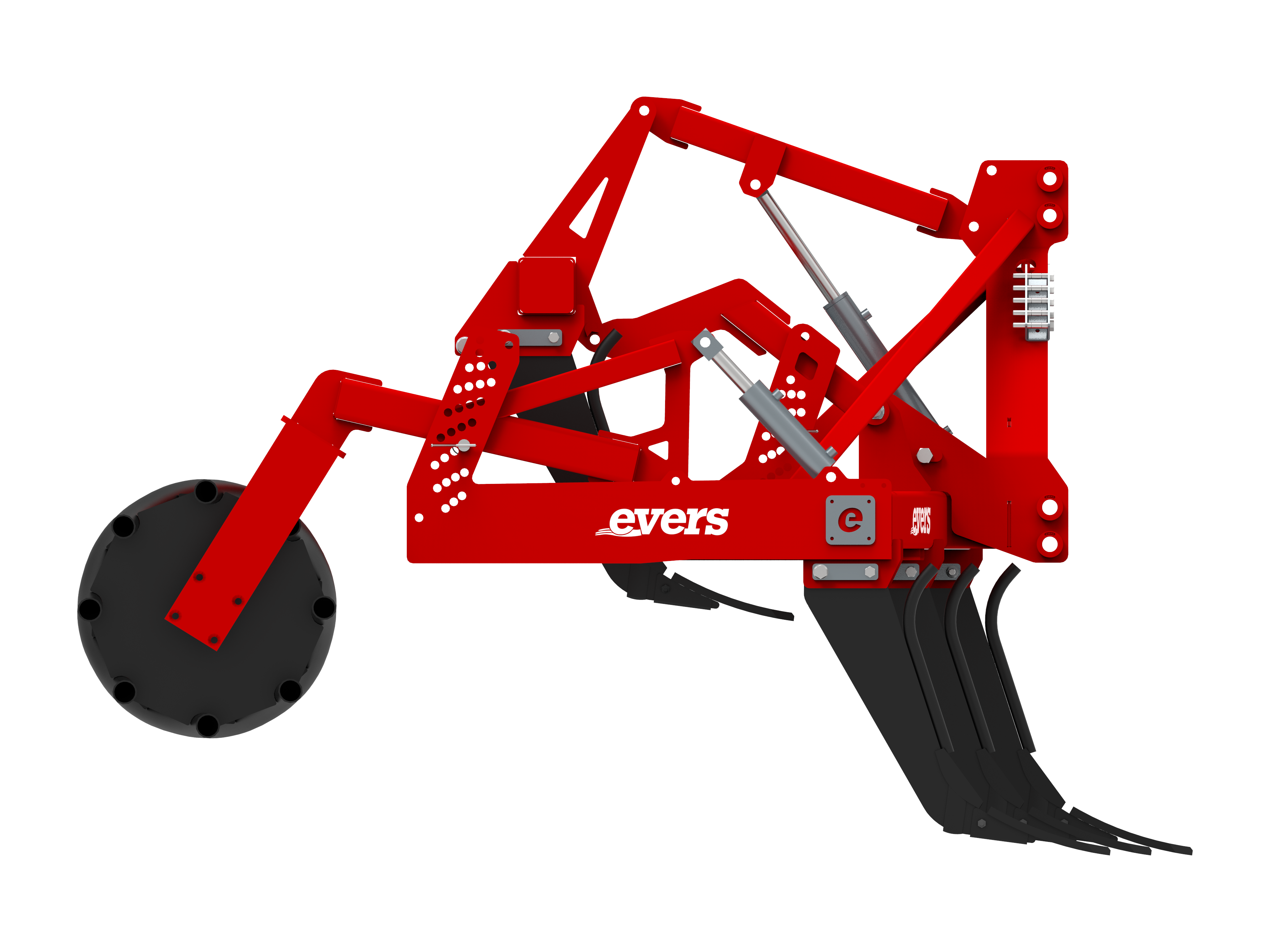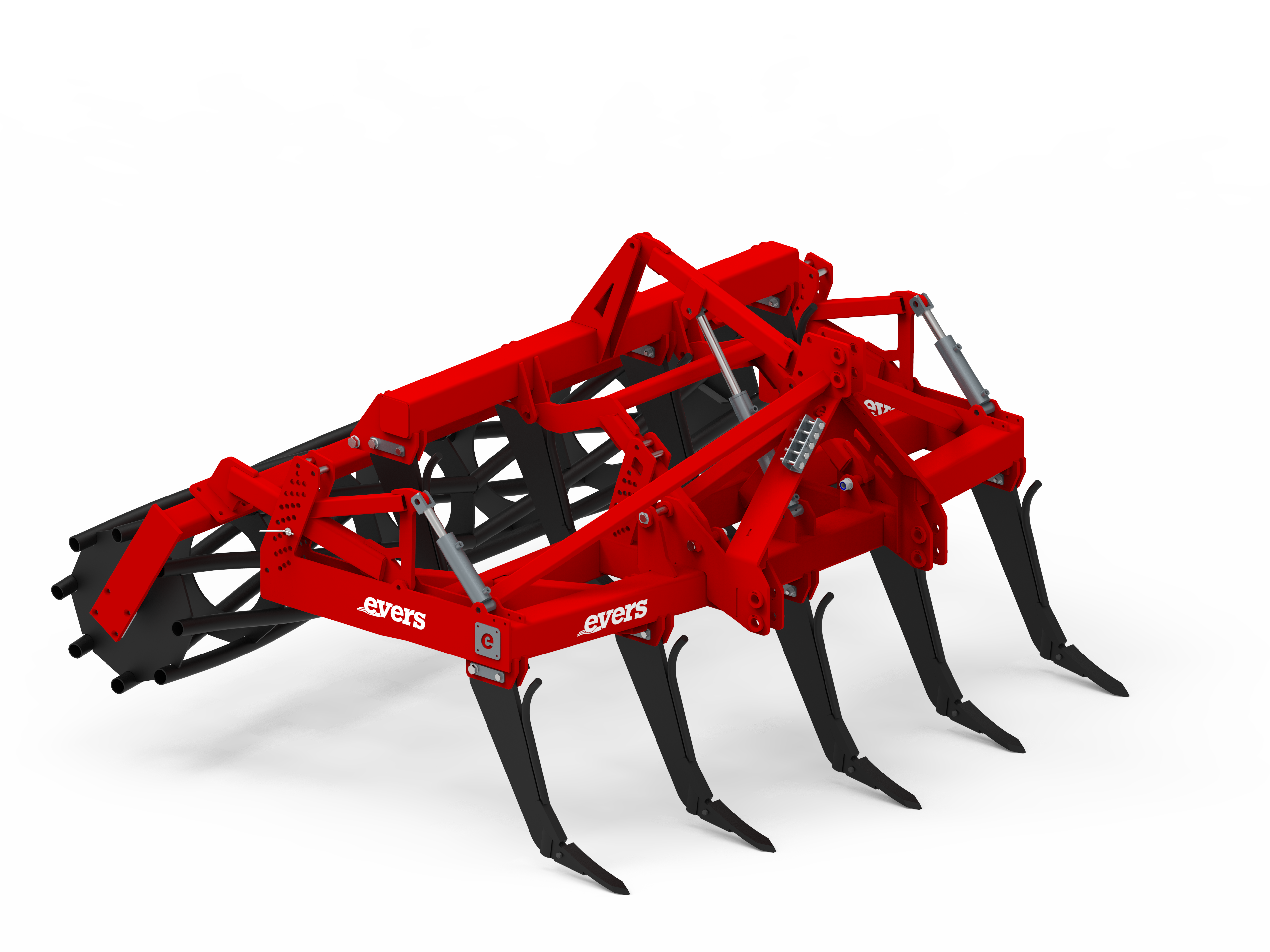
Evers Agro has updated the Forest multi-purpose cultivator. What remains is the multi-level frame with the second row of rigid tines. What is new is the option of infinitely variable lifting of the second row of tines, depending on the slip rate or tractive force, using Isobus control.
Tilling or cultivating to remove a compacted layer should be done to just below the depth where compaction is occurring. Breaking through a compacted layer is possible with the tines. If slip occurs on a rigid-frame cultivator or the machine requires too much tractive force, the depth control/driver lifts the entire machine. This reduces the working depth until sufficient grip is regained. In doing so, the tines rise above the compacted layer, which remains untouched and in place. Soil compaction then persists, with all its drawbacks.
What solution does the Evers Forest cultivator offer?
The Evers Forest has a multi-level frame containing a second row of tines. This second row of tines can be steplessly lifted independently from the first row of tines. The working depth of the first row of tines remains constant, even if you lift out the second row of tines. Lifting the second row of tines reduces tractive force and slip.
Automatic control on the second row of tines
Evers now offers the option of automatic (via Isobus) slip-dependent reduction of tractive force, by lifting the second row of tines. This is called Vario Compaction Control.
The Forest multi-purpose cultivator is a versatile machine with two rows of rigid tines. The second row of rigid tines is mounted in a hydraulic, height-adjustable multi-level frame. The hydraulic cylinder can lift the second row of tines while working. Based on the tractor's slip data, the new innovative Evers Vario Compaction Control system automatically controls the lifting of the second tine row. If the slip increases, the multi-level frame lifts. This keeps the first tine row at the desired depth and continues to break up the compacted layer.
Why is removing compacted layers important?
Compacted layers in the soil block root development and the capillary action of the soil and create wet spots in the field. Removing these compacted layers restores the water-storage capacity of the field, improves the available space for root development and restores the capillary action of the soil.
The sustainable use of soil is a very hot topic. Aerating the soil and removing soil compaction improves water and air permeability. The water storing capacity of the soil increases, more oxygen reaches the roots and capillary action in the soil is restored. These aspects are essential for optimal crop growth and good quality harvested product. A penetrometer can be used to measure exactly at what depth a compacted layer is in the soil.
The updated Forest multi-purpose cultivator with the unique and innovative Vario Compaction Control system will be live on display at Agritechnica.
Read more about the Forest cultivator




This project is financially supported by the European Union and the Interreg partners as part of the Germany-Netherlands Interreg programme.

